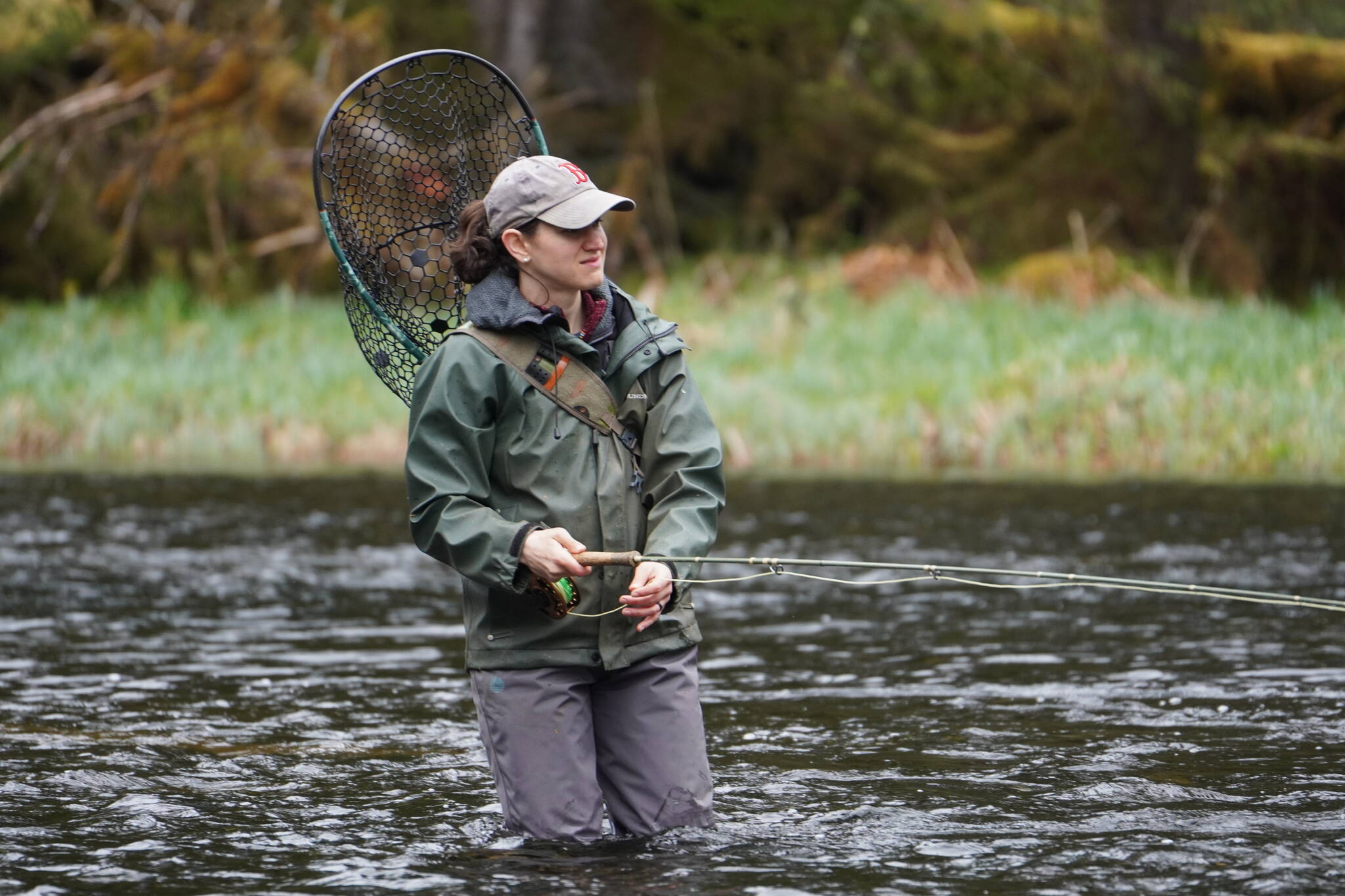Variable winds are ideal for an 18-foot aluminum skiff and the forecast was correct.
However, as per usual, the further one gets from the forecast location the more variable the conditions. The calm seas increased to a light chop by the time my wife and I arrived tied up. Our friend Ryan rented the cabin Friday night, and I booked Saturday so our combined claim to the forest cabin along with a good weather forecast pointed to an epic weekend. Crab and shrimp pots were soaking and steelhead in the nearby river had been left alone since the previous party vacated. Every river that contains steelhead has been hammered by this point in the year. Even the most ambiguous descriptions of locations lead people to guess. How far was the run in the boat? Did you tie up to a dock or mooring buoy? I want to tell a story, not advertise a spot, so leave it at that.
Anyway, the steelhead didn’t bite and the crab and shrimp didn’t cooperate either so as far as fishing goes, it was a near-skunking. Abby lost a steelhead early in the first session, but the rest of Saturday and the morning Sunday attempt were fruitless other than a few small trout.
A sound beating.
But learning never stops and often happens best when reflecting upon failure.
Now that I have some time to digest, I have reduced our steelhead problems to two main adjustments. First is depth, as it usually is. Thin water can be sneaky deep and a heavy fly can seem plenty to get to the bottom where steelhead hold. But if the current is just swift enough, and the fly just light enough, you can spend hours suspending your fly above holding steelhead. Proximity is what turns tempting into impossible to resist.
Steelhead will move to a fly, that’s for sure, but staking the entire session on that often leads to disappointment. There is always a difference between fishing and fishing well.
It occurred to me at the time that we might not be low enough in the water but I instead tried to compensate with careful mending and casting. But I don’t think it worked. I really think I needed a heavier fly too or to add a little weight.
The second issue thing was fly selection. This is a horrible feeling or realization when you’re hours from home. I wanted a small, compact, heavy fly for a dead drift or to roll down the current toward the steelhead. But I had mostly streamers and we were down to our last liquid wrench which has been the fly of the season so far. Grumpy streamers often do evoke monstrous takes after a predatory chase, but not in this case. Not on this river. The conditions called for a smaller profile pattern like the ones I had left at home. My lack of fly box organization and preparation left me feeling nearly helpless. Over the previous two weeks we had success fishing from a box that was specifically stocked for that specific river. But some flies were still drying on the shelf, some were in a box we left at home to save weight and some were exiled to underwater snags.
Steelhead can be brutally unforgiving to those without the right tools, and we were hammering screws.
A few hours after returning home, Abby and I put together the definitive steelhead fly box. We sorted, we stocked, and I took the opportunity to validate robust order from the Juneau fly shop.
• Jeff Lund is a freelance writer based in Ketchikan. His book, “A Miserable Paradise: Life in Southeast Alaska,” is available in local bookstores and at Amazon.com. “I Went to the Woods” appears twice per month in the Sports & Outdoors section of the Juneau Empire.

